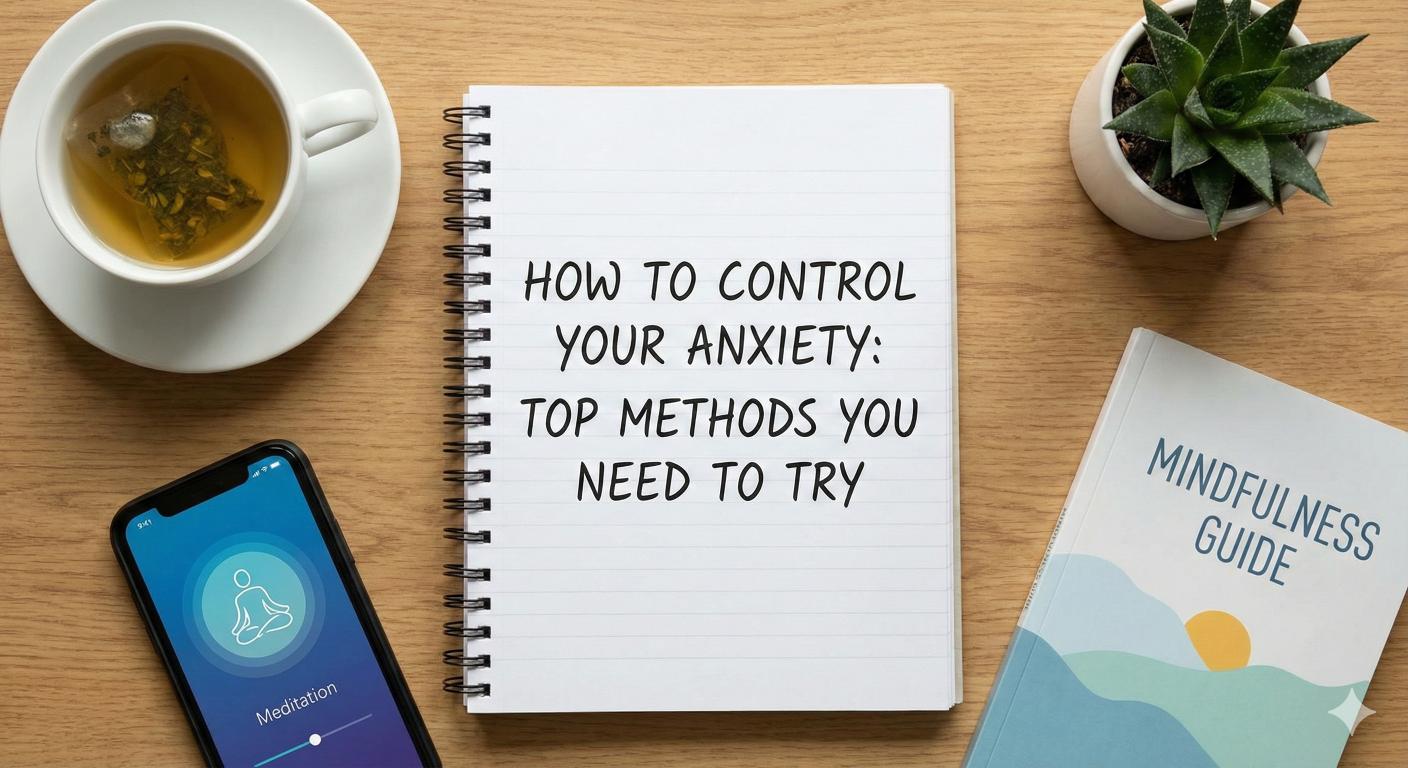Navigating Orthorexia: Recognizing When Health Goes Too Far
Explore orthorexia: when healthy eating becomes an obsession and learn how to recognize and seek help.


Understanding Orthorexia Nervosa
Definition and Characteristics
Orthorexia nervosa is characterized by an obsession with healthy eating and consuming only pure foods. This fixation on diet can extend to the point of interfering with daily life, leading individuals to isolate themselves from friends and family. Such behaviors can create strain on social life and personal relationships [1]. Individuals suffering from orthorexia may spend excessive amounts of time planning, preparing, and monitoring their food intake to ensure that they adhere strictly to their dietary standards.
One key aspect of orthorexia is the guilt associated with consuming foods deemed "unhealthy." This obsession can lead to nutritional deficiencies as these individuals may restrict entire food groups from their diets. Here is a concise breakdown of orthorexia symptoms:
CharacteristicDescriptionObsession with healthy foodIndividuals feel compelled to eat only "pure" or "healthy" foods, avoiding anything perceived unhealthy.Social isolationExcessive dietary restrictions can lead to withdrawing from social events that involve food.Guilt and shameFeeling guilty for eating foods not deemed "healthy," resulting in anxiety and emotional distress.
Orthorexia vs. Anorexia
While both orthorexia and anorexia involve extreme dietary habits, they are distinct disorders with different motivations.
Anorexia nervosa is characterized by an intense fear of gaining weight and a distorted body image. Individuals with anorexia typically show extreme dietary habits aimed at preventing weight gain, often resulting in an inability to maintain a minimally normal weight. This disorder has two common subtypes: the restricting type and the binge-eating/purging type [1].
To better illustrate the differences between orthorexia and anorexia, consider the following table:
FeatureOrthorexiaAnorexia NervosaPrimary FocusObsession with healthy foodsIntense fear of weight gainDietary BehaviorRestriction based on food purityRestriction to achieve extreme weight lossBody ImageOften not distorted, focuses on perceived healthDistorted body image, with an intense fear of weightSocial ImpactIsolation due to dietary restrictionsIsolation from relationships due to extreme dieting
Understanding these distinctions is crucial for recognizing and addressing each disorder appropriately. For more information on other eating disorders, consider exploring articles on anorexia nervosa, bulimia nervosa, and binge eating disorder.

Behavior Patterns of Orthorexia
Understanding the behavior patterns of individuals with orthorexia nervosa is crucial for recognizing the condition and its implications. Two significant areas to explore are obsessive eating habits and the social implications that emerge from these behaviors.
Obsessive Eating Habits
Individuals with orthorexia display an intense preoccupation with healthy eating, often leading to obsessive behaviors. They may spend considerable time scrutinizing the source, processing, and packaging of foods. This often includes having internalized rules governing food combinations and requiring unusually long periods to prepare and consume meals. Many believe in "magical" properties associated with certain foods, fueling their obsessions.
Orthorexia nervosa is estimated to affect between 1% and 6.9% of the general population, with higher rates observed among healthcare professionals and performance artists. The following table summarizes common obsessive eating habits associated with orthorexia:
BehaviorDescriptionScrutinizing food detailsSpending excessive time analyzing food labels, preparation methods, and ingredients.Ritualistic eatingFollowing strict rules about what and when to eat, often leading to complicated meal preparations.Avoidance of certain foodsRefusal to consume foods deemed unhealthy, limiting diet variety.Negative emotionsExperiencing frustration, guilt, or self-loathing when failing to adhere to their eating rules.
These obsessive behaviors can lead to malnutrition, medical complications, and a significant impact on overall well-being.
Social Implications
The fixation on healthy eating can greatly affect social interactions and relationships. Individuals with orthorexia may experience social isolation as they avoid situations involving food, such as dining out or attending social gatherings. This isolation stems from a fear of being unable to adhere to their strict dietary rules or encountering unhealthy foods.
Frequent use of social media has further complicated this issue, as studies have linked high levels of social media exposure to increased rates of orthorexia, especially among healthy eating influencers. Posts glorifying certain diets can intensify feelings of inadequacy and prompt undue pressure to conform to unrealistic eating standards [2]. The following table illustrates some of the social implications faced by those with orthorexia:
Social ChallengeDescriptionSocial withdrawalAvoidance of social gatherings that involve food, leading to isolation.Fear of judgmentAnxiety about being judged for food choices in social settings.Strained relationshipsTension in friendships or family dynamics due to differing dietary habits and restrictions.
These patterns highlight the importance of understanding orthorexia as more than just a dietary preference. When healthy eating devolves into obsession, it can have far-reaching effects on both individual health and social well-being. For deeper insights into the spectrum of eating disorders, refer to our article on understanding eating disorders: types and symptoms.

Factors Contributing to Orthorexia
Understanding the factors contributing to orthorexia is vital for recognizing the nuances of this eating disorder. Two significant aspects that often play a critical role are perfectionism and control, along with an obsession with food.
Perfectionism and Control
Perfectionism and a need for control are central elements in the development of orthorexia. Individuals may strive for an ideal that becomes unachievable, leading to an excessive focus on food-related topics. This pursuit can manifest in strict dietary rules and an intense desire to only consume foods deemed "healthy" or "pure" [1].
Orthorexia shares traits with anorexia nervosa and obsessive-compulsive disorder (OCD), reflecting high levels of perfectionism and anxiety. Those with orthorexia often feel a sense of satisfaction from adhering strictly to their dietary preferences. This satisfaction is described as ego-syntonic, meaning the behavior aligns with their self-image, unlike the ego-dystonic obsessions typically seen in OCD [3].
Driving FactorsDescriptionPerfectionismThe pursuit of an unattainable ideal in food choices.ControlThe need to regulate every aspect of one’s diet.
Obsession with Food
The obsession with food is a hallmark of orthorexia. It often leads individuals to extensively research nutrition, develop rigid meal plans, and excessively monitor what they eat. This fixation can cause significant stress and isolation, as social situations involving food may become sources of anxiety.
Individuals may lose sight of the broader purpose of eating, which includes enjoyment and socialization, focusing solely on the quality of food. As they become increasingly restrictive in their food choices, this obsession can lead to disordered eating patterns and, ultimately, to nutritional deficiencies.
The intensity of this obsession can disrupt everyday life, making it difficult for individuals to maintain healthy relationships or engage in normal activities. Rather than being a source of nourishment, food transforms into an object of anxiety and control.
Obsessive BehaviorsImpactStrict dietary rulesLimited social interactions involving food.Extensive food researchIncreased anxiety and stress related to eating.
Recognizing these factors is a crucial step towards understanding orthorexia: when healthy eating becomes an obsession. Identifying these patterns may facilitate early interventions and support for individuals struggling with this eating disorder. For further insights into the types of eating disorders, check out our article on understanding eating disorders: types and symptoms.

Recognizing and Diagnosing Orthorexia
Diagnosing orthorexia nervosa requires understanding its unique characteristics and how they differentiate it from other eating disorders.
Diagnostic Criteria
Orthorexia is characterized by an obsession with healthy eating, causing significant interference in daily life. Individuals may spend excessive time focusing on the source, processing, and packaging of foods. They often establish strict rules around food consumption, leading to social isolation and strained relationships [1]. Some key diagnostic criteria might include:
CriterionDescriptionObsession with Healthy EatingAn overwhelming focus on consuming only "pure" foods to the detriment of social interactions and quality of life.Social IsolationWithdrawal from friends and family due to strict dietary practices.Emotional DistressExperiences of guilt, shame, or disgust associated with food decisions.Perfectionist AttitudeHigh levels of anxiety and the need for control over eating habits.
Differentiating from Other Disorders
Orthorexia shares similarities with other eating disorders, particularly anorexia nervosa, but also has unique features that set it apart.
DisorderKey CharacteristicsSimilarities with OrthorexiaAnorexia NervosaIntense fear of gaining weight, distorted body image, severe restriction of food intake.Both can involve obsessive behaviors and perfectionism, but the primary focus in anorexia is on weight loss.Bulimia NervosaCycles of binge eating followed by purging behaviors.Both can reflect disordered eating patterns, but bulimia centers on compensatory behavior rather than strict rules on healthy eating.Binge Eating DisorderRecurrent episodes of eating large quantities of food without purging.While both may initially seem about food, orthorexia is primarily about avoiding "unhealthy" foods rather than engaging in binge cycles.Obsessive-Compulsive Disorder (OCD)Characterized by intrusive thoughts and compulsive behaviors.Orthorexia shares traits with OCD, especially the focus on control. However, in orthorexia, the food obsession feels agreeable to the individual (ego-syntonic) compared to the distressing obsessions in OCD.
Understanding these distinctions is crucial for effective diagnosis and treatment. For further insight into the types and symptoms of eating disorders, refer to our article on understanding eating disorders: types and symptoms. Recognizing these patterns can help individuals seek appropriate assistance and support.

Treatment Approaches for Orthorexia
Addressing orthorexia, characterized as an unhealthy obsession with healthy eating, requires a multi-faceted treatment approach. To effectively manage this eating disorder, professionals often implement various therapeutic interventions and cognitive-behavioral strategies.
Therapeutic Interventions
Treatment for orthorexia typically involves a team of health professionals, including a medical physician, psychiatrist, therapist, and dietitian. This collaborative approach ensures that individuals receive comprehensive care tailored to their specific needs. Some commonly employed therapeutic interventions include group treatment, individual therapy sessions, and peer support groups to facilitate recovery [1].
The emphasis is placed on understanding the balance between healthy eating habits and the detrimental effects of obsessive behaviors. Educational components are critical, helping individuals recognize the difference between beneficial health practices and harmful dietary restrictions. Treatment aims to help individuals form a healthier relationship with food, reducing anxiety around meals.
Cognitive-Behavioral Strategies
Cognitive-behavioral therapy (CBT) is considered one of the leading treatment modalities for orthorexia. Studies suggest that CBT can effectively address the underlying psychological factors contributing to the disorder. This therapy often focuses on aspects such as cognitive restructuring, where harmful beliefs about food are challenged and reframed [3].
In addition to CBT, professionals may incorporate techniques such as exposure and response prevention. This strategy involves gradually exposing individuals to feared foods while teaching them coping mechanisms to manage their anxiety surrounding food choices. Other strategies may include dialectical behavior therapy (DBT), which focuses on emotional regulation and distress tolerance [4].
These cognitive-behavioral approaches are designed to alleviate perfectionism and reduce high anxiety levels associated with food choices, fostering a more balanced approach to eating. For further insights on related concepts, one may explore the link between perfectionism and eating disorders or review comprehensive options for cognitive-behavioral therapy (CBT) for eating disorders.
By understanding both therapeutic interventions and cognitive-behavioral strategies, individuals affected by orthorexia can work towards recovery and restore a healthy relationship with food and nutrition.

Seeking Help for Orthorexia
Finding help for orthorexia is vital for recovery and maintaining a healthy relationship with food. Resources are available for those facing challenges, ensuring support is accessible to everyone affected by this condition.
National Eating Disorders Association Resources
The National Eating Disorders Association (NEDA) offers comprehensive support and educational resources tailored to those struggling with eating disorders, including orthorexia. Their services include:
Recognizing that financial barriers can hinder access to treatment, NEDA also offers a range of free and low-cost support options aimed at connecting individuals struggling with orthorexia with others who share similar experiences. This community support is crucial for fostering recovery and resilience.
Partner Organizations' Support
In addition to NEDA, partner organizations provide vital support for those dealing with orthorexia. For instance, individuals can reach out to helplines offered by various organizations, including F.E.A.S.T (Families Empowered and Supporting Treatment) and the Suicide and Crisis Lifeline. These services can help individuals navigate their challenges, find immediate support, and connect with communities that understand their struggles.
Utilizing these resources can significantly impact one’s journey towards recovery from orthorexia. Comprehensive support, effective communication, and access to expert guidance are essential components in fostering a healthier mindset towards eating and overall well-being. For a deeper understanding of eating disorders, consider exploring our articles on understanding eating disorders: types and symptoms and the link between perfectionism and eating disorders.
References
[2]:
[3]:
[4]:
More Resources
A team ready to start your journey.
Get in touch — today.
We are a safe space – a haven for exceptional individuals to receive discreet, personalized, in-person treatment and care.
.avif)










